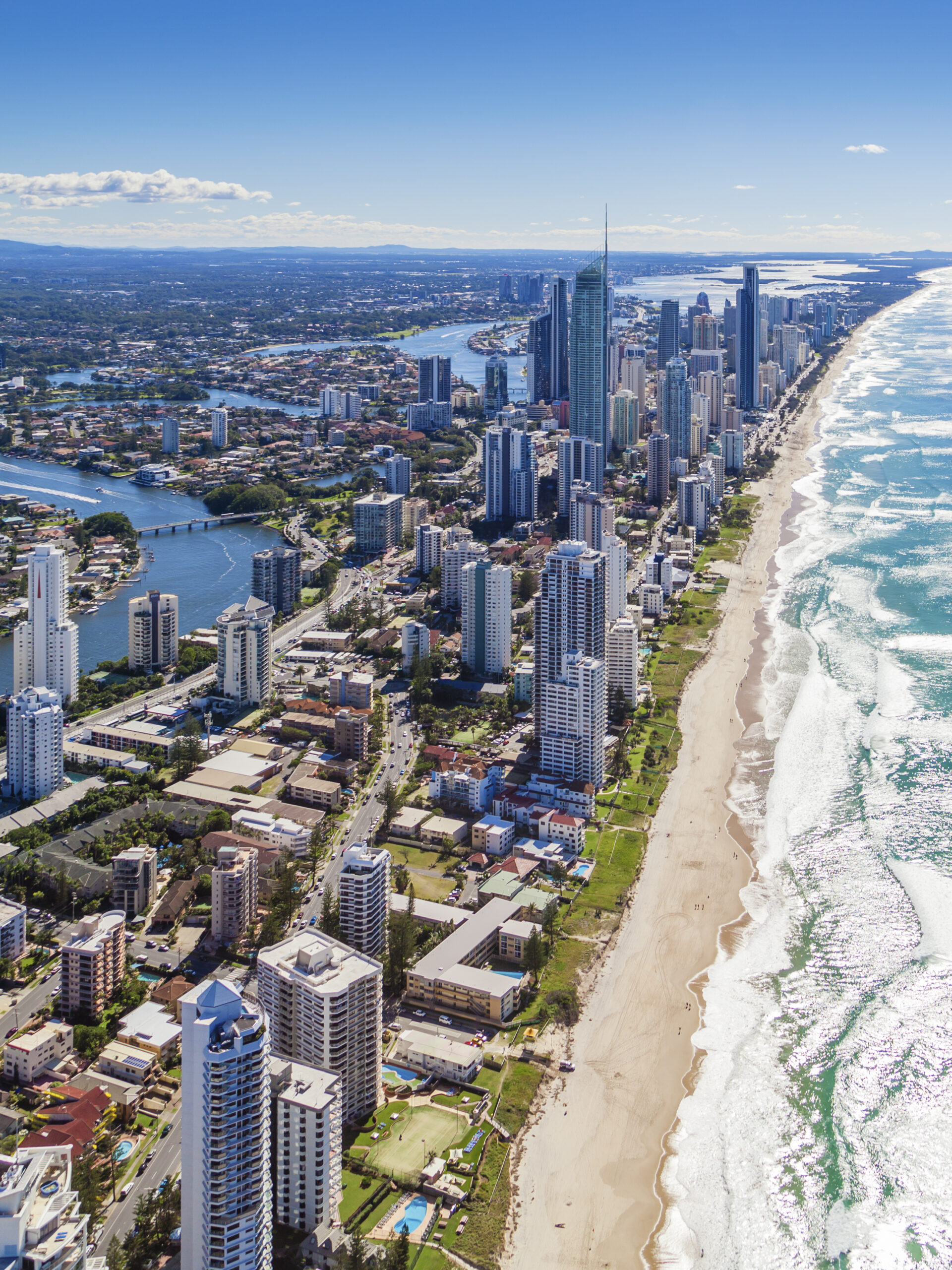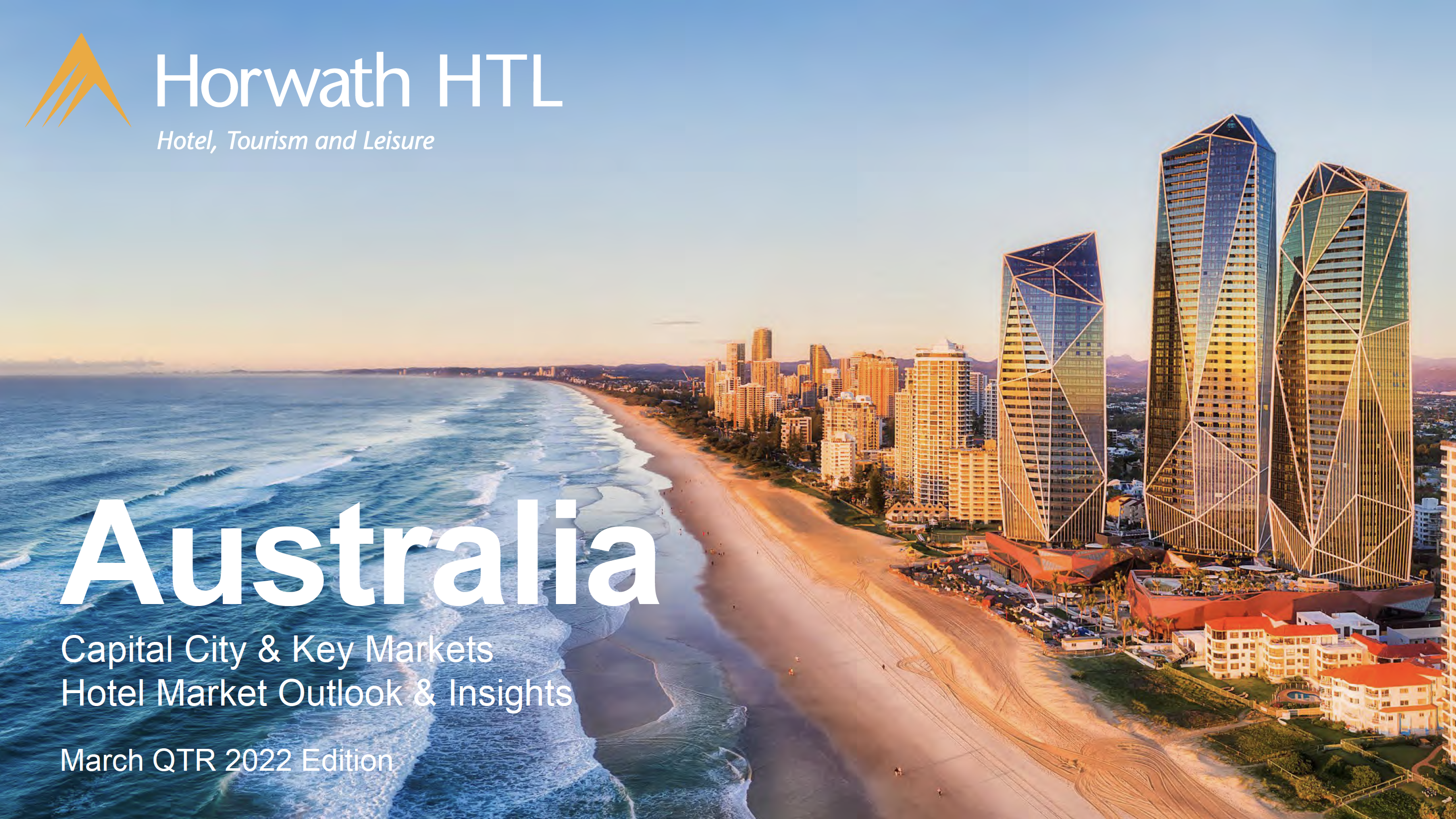
Report
Australia Key City Hotel Market Outlook
Market Recovery and Performance:
Australia’s economic recovery in early 2022 was more robust than anticipated, with the unemployment rate near a half-century low and export prices at record highs. However, the international tourism sector faces a slower recovery due to expensive travel costs, complex travel requirements, and the ongoing risk of new COVID-19 variants. Domestic tourism is expected to return to pre-pandemic levels by 2022-23, surpassing them by 2023-24, though Victoria and other territories may experience delayed recoveries due to prolonged lockdowns.
Regional Economic Insights
- New South Wales (NSW): Growth depends on pandemic resilience, international borders, and managing inflation and energy costs.
- Victoria (VIC): Faces challenges from internal migration losses and interrupted population growth, with a gradual return of migrants and students.
- Queensland (QLD): Despite floods, positive growth outlook driven by recovery efforts.
- Western Australia (WA): Growth driven by exports amidst weak domestic conditions.
- South Australia (SA): Projected to have the slowest long-term growth, with Gross State Product (GSP) forecasted to grow at a CAAGR of 2.0% from 2019 to 2026.
- Tasmania (TAS): Outperformed other states by keeping COVID cases low but faces challenges from a small, aging population and low labour force participation.
- Australian Capital Territory (ACT): Strong growth expected from increased social security and defence spending.
- Northern Territory (NT): Supported by rising government spending, commodity prices, and business investment.
Tourism Outlook
- International Arrivals: Expected to reach pre-pandemic levels by 2024 for ACT, NT, VIC, and SA; 2025 for TAS, NSW, and WA; and 2026 for QLD.
- Domestic Tourism: Expected to return to pre-pandemic levels by 2022-23 and surpass them by 2023-24.
Hotel Market Performance
- RevPAR (Revenue per Available Room): Significant recovery across key markets:
- Brisbane: 35.5% YoY increase, reaching 95.6% of 2019 levels.
- Canberra: 33.7% YoY increase, reaching 90.5% of 2019 levels.
- Darwin: 8.4% YoY increase, surpassing 2019 levels at 121.7%.
- Gold Coast: 33.9% YoY increase, reaching 111.4% of 2019 levels.
- Hobart: 34.3% YoY increase, reaching 89.7% of 2019 levels.
- Melbourne: 56.8% YoY increase, reaching 53.0% of 2019 levels.
- Newcastle: 4.2% YoY decrease, reaching 93.2% of 2019 levels.
- Perth: 8.6% YoY increase, reaching 82.5% of 2019 levels.
- Sunshine Coast: 18.1% YoY increase, reaching 139.0% of 2019 levels.
- Sydney: 39.2% YoY increase, reaching 50.9% of 2019 levels.
Supply Pipeline
- Sydney: 3.0% CAAGR from 2021 to 2026, with significant additions in upscale and luxury segments.
- Melbourne: 4.3% CAAGR, focusing on upscale and upper upscale segments.
- Brisbane: 2.2% CAAGR, with notable growth in luxury segments.
- Perth: 2.1% CAAGR, with ongoing developments in upper upscale and luxury segments.
- Adelaide: 3.9% CAAGR, with significant developments in upscale and luxury segments.
- Canberra: 2.1% CAAGR, focusing on upscale segments.
- Hobart: 3.3% CAAGR, with developments in upscale segments.
- Gold Coast: 1.3% CAAGR, focusing on luxury and upscale segments.
- Sunshine Coast: 1.4% CAAGR, with a mix of midscale and upscale developments.
- Newcastle: 2.9% CAAGR, focusing on luxury and upscale segments.
Future Outlook The overall outlook for Australia’s hotel market in 2022 and beyond is positive, with gradual recovery expected across all regions. Key challenges include managing supply additions and adapting to the evolving travel landscape amidst ongoing pandemic uncertainties.
Download the report
For detailed charts, graphs, and further analysis, download the full report here



